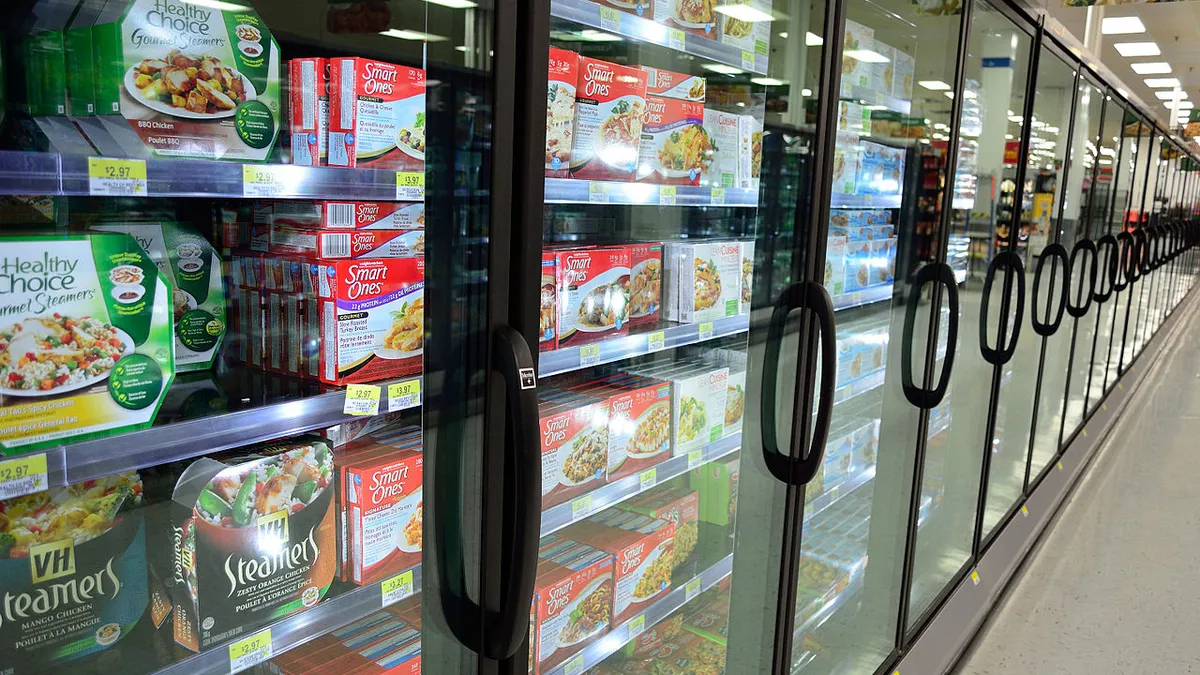Dive Brief:
- Frozen foods are driving center store sales growth, with dollar spend rising 21% from 2019 to 2020 and almost all frozen product categories logging double-digit sales increases, according to a new report published by the American Frozen Food Institute (AFFI) and the Food Industry Association (FMI).
- AFFI called frozen foods a “pandemic powerhouse” that hit $65.1 billion in retail sales in the U.S. last year, noting that 30% of shoppers surveyed have increased their freezer capacity since the pandemic started and 57% purchased more foods now than they did before the health crisis. Households that bought frozen foods online almost doubled from 2018 (23%) to 2020 (42%).
- Within the frozen food department, the products that had the strongest growth included seafood (up 35.3%), poultry (up 34.7%) and appetizers (up 28.9%). Continued growth in the frozen food aisle in 2021 will depend on producers pushing more experimentation and driving engagement with new category buyers, the report says.
Dive Insight:
Multi-serve meal solutions have also accelerated in sales growth since April as families have sought new home meal solutions. For “core,” or high-frequency frozen food shoppers, new purchases have spanned all meal occasions, the report found, noting that the number of core frozen food shoppers increased from 35% in 2018 to 39% in 2020.
The report, which was conducted by 210 Analytics, compiled data from a survey of 1,500 frozen food shoppers in November 2020 as well as data from IRI.
Families with young children, in particular, are expanding their frozen food purchases as virtual schooling has squeezed parents’ free time, according to the report.
Compared to their pre-pandemic shopping habits, shoppers are citing a desire for experimentation, a need for greater variety and a focus on buying better value, according to the report. Frozen food buyers said they want more resealable packaging, different quantities and pack sizes, and environmentally sustainable packaging. They also indicated an interest in “real” ingredients, seeking out frozen offerings that at least suggest the use of naturally sourced products.
Retail sales data indicates that the perception of frozen foods as more unhealthy or containing more preservatives than fresh food has thawed, in part due to convenience and low prices, experts have said recently. Fighting this stigma is critical for retailers looking to attract low-frequency users, who are especially receptive to health-focused improvements, according to "The Power of Frozen 2019" report from FMI and AFFI.
The global frozen food market is expected to continue on an upward trajectory, with a compound annual growth rate of between 3.5 and 5% until at least 2025, according to analysis by Research and Markets, which noted that the possibility of cold chain system failure is still a vulnerability of the segment.
The 2020 report suggests that promotional drives such as “stock-the-freezer” events; targeted cross-merchandising and advertising tactics; and pushing innovative meal ideas for at-home dinners can facilitate continued growth in the frozen aisle in 2021.












